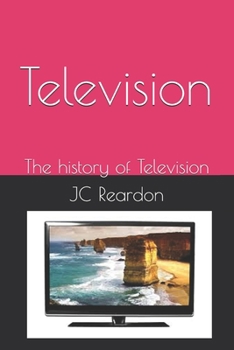Television: The history of Television
Early Beginnings (Pre-1920s)
The concept of television was inspired by the idea of transmitting images over long distances, building upon earlier inventions like the telegraph and radio. Scientists and inventors experimented with ways to transmit moving images electronically.
The Birth of Television (1920s-1930s)Mechanical TV: In the 1920s, John Logie Baird (UK) and Charles Francis Jenkins (US) developed mechanical television systems using spinning discs and light-sensitive elements. However, these systems had low resolution and poor image quality.Electronic TV: Philo Farnsworth and Vladimir Zworykin were pioneers in developing fully electronic television using cathode-ray tubes (CRTs). Farnsworth successfully demonstrated the first working electronic TV system in 1927.Television Takes Off (1940s-1950s)By the late 1930s, major companies like RCA and BBC started regular television broadcasts.World War II slowed down TV development, but after the war, television exploded in popularity.The 1950s saw the rise of iconic TV shows and the transition from black-and-white to color broadcasting.The Golden Age of Television (1950s-1960s)Television became the dominant form of entertainment and news media.Networks like NBC, CBS, and ABC in the US gained prominence.Live programming, sitcoms, and soap operas became staples of television.In 1954, color broadcasting was introduced in the US.The Expansion Era (1970s-1980s)The rise of cable television allowed for more channels and specialized programming.Satellite television expanded TV accessibility worldwide.Popular TV formats such as talk shows, game shows, and reality TV emerged.The Digital Revolution (1990s-2000s)The transition from analog to digital broadcasting began.High-definition television (HDTV) improved picture quality.The rise of streaming services, such as Netflix, changed how people consumed TV content.The Streaming Era (2010s-Present)The decline of traditional cable TV as more viewers switched to online streaming services.Smart TVs and internet-based platforms like YouTube, Netflix, Hulu, and Disney+ revolutionized entertainment.Advances in 4K and 8K technology have further enhanced TV quality.The Future of TelevisionAI-generated content, virtual reality (VR), and interactive TV are expected to shape the next generation of television.The integration of AI and voice control into smart TVs continues to improve user experiences.TV as we know it continues to evolve with advancements in technology and changing viewing habits.
The concept of television was inspired by the idea of transmitting images over long distances, building upon earlier inventions like the telegraph and radio. Scientists and inventors experimented with ways to transmit moving images electronically.
The Birth of Television (1920s-1930s)Mechanical TV: In the 1920s, John Logie Baird (UK) and Charles Francis Jenkins (US) developed mechanical television systems using spinning discs and light-sensitive elements. However, these systems had low resolution and poor image quality.Electronic TV: Philo Farnsworth and Vladimir Zworykin were pioneers in developing fully electronic television using cathode-ray tubes (CRTs). Farnsworth successfully demonstrated the first working electronic TV system in 1927.Television Takes Off (1940s-1950s)By the late 1930s, major companies like RCA and BBC started regular television broadcasts.World War II slowed down TV development, but after the war, television exploded in popularity.The 1950s saw the rise of iconic TV shows and the transition from black-and-white to color broadcasting.The Golden Age of Television (1950s-1960s)Television became the dominant form of entertainment and news media.Networks like NBC, CBS, and ABC in the US gained prominence.Live programming, sitcoms, and soap operas became staples of television.In 1954, color broadcasting was introduced in the US.The Expansion Era (1970s-1980s)The rise of cable television allowed for more channels and specialized programming.Satellite television expanded TV accessibility worldwide.Popular TV formats such as talk shows, game shows, and reality TV emerged.The Digital Revolution (1990s-2000s)The transition from analog to digital broadcasting began.High-definition television (HDTV) improved picture quality.The rise of streaming services, such as Netflix, changed how people consumed TV content.The Streaming Era (2010s-Present)The decline of traditional cable TV as more viewers switched to online streaming services.Smart TVs and internet-based platforms like YouTube, Netflix, Hulu, and Disney+ revolutionized entertainment.Advances in 4K and 8K technology have further enhanced TV quality.The Future of TelevisionAI-generated content, virtual reality (VR), and interactive TV are expected to shape the next generation of television.The integration of AI and voice control into smart TVs continues to improve user experiences.TV as we know it continues to evolve with advancements in technology and changing viewing habits.
Format:Paperback
Language:English
ISBN:B0F3V476B6
ISBN13:9798316815197
Release Date:April 2025
Publisher:Independently Published
Length:264 Pages
Weight:0.79 lbs.
Dimensions:0.6" x 6.0" x 9.0"
Customer Reviews
0 rating





